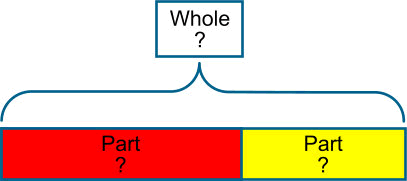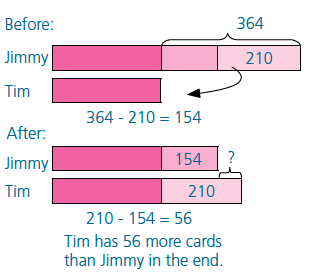Everything About Bar Version Illustration Techniques: Transforming Complex Math Problems Into Straightforward Visuals
Bar model drawing techniques provide a sensible technique to comprehending complicated math issues. By representing numbers and their relationships with basic rectangle-shaped bars, trainees can picture procedures like addition, reduction, department, and multiplication. This approach not only enhances understanding yet also promotes vital believing skills. As educators check out the benefits of bar versions, they might discover brand-new techniques to involve learners in mathematics. What understandings can these techniques provide in real-world situations?
Comprehending bench Design Concept

The bar design advertises vital thinking by encouraging students to imagine analytic procedures. It allows them to recognize missing worths via comparative analysis of the sizes of benches, making abstract concepts tangible. This approach is specifically reliable for more youthful trainees that might battle with numerical representations alone. Because of this, bench model fosters a strong foundational understanding of maths, boosting overall analytic skills and advertising confidence in handling mathematical operations.
Just How to Develop Bar Versions for Addition and Reduction
To efficiently produce bar versions for addition and subtraction, one must initially identify the amounts included in the issue. This entails recognizing the overall amount, in addition to the individual parts that add to that overall. For enhancement, the model generally includes two bars representing the separate quantities, with a 3rd bar suggesting their incorporated sum. Each bar's size must represent its mathematical value, making it easy to imagine the relationship in between the amounts.
In reduction, the model is somewhat various; it consists of one bar for the overall and one more for the amount being subtracted. The continuing to be part can be stood for as a separate bar, highlighting the difference. By clearly identifying each bar with its corresponding value, the version becomes an efficient aesthetic tool. bar model drawing techniques. This technique not just aids in comprehending the procedures but likewise boosts analytic skills, making math extra available to students
Making Use Of Bar Versions for Multiplication and Division
Bar designs offer as effective devices for picturing reproduction and division, simplifying complex issues into workable components. By standing for amounts with rectangular bars, learners can quickly comprehend partnerships in between numbers. In reproduction, a bar version can highlight the principle of groups, where one bar represents the complete amount and smaller sized sectors stand for private teams. A model could show 4 groups of 3, with the complete size of the bar showing 12.
In department, bar designs successfully illustrate the circulation of an overall quantity right into equivalent components. A single bar can represent the total number being separated, with sectors showing the equal parts created. This graph helps pupils understand the concept of separating or sharing. On the whole, making use of bar designs for these operations improves understanding by changing abstract computations into concrete visuals, permitting trainees to envision the connections in between divisors and multiplicands successfully.
Resolving Word Problems With Bar Versions
Word problems can typically pose obstacles for students, making it hard to identify the required operations to resolve them. Bar versions offer as an important tool in this circumstance, changing complicated situations into clear aesthetic representations. By segmenting details into bars, trainees can much better recognize connections and amounts involved in the problem.
When encountered with a word issue, learners can begin by determining crucial parts such as overalls, components, and the relationships between them. Each aspect can be illustrated making use of unique bars, permitting pupils to visualize the problem's structure. This method promotes logical reasoning, enabling learners to determine which mathematical procedures to use.
For example, when managing enhancement or reduction, bench design can represent the whole and its parts, while for multiplication and division, it can define equal groups. On the whole, bar versions streamline the analytical process, making it more available for students to reach the appropriate options.
Tips for Mentor Bar Model Techniques Effectively
Reliable training of bar design techniques can greatly enhance pupils' understanding of mathematical ideas. To attain this, teachers ought to begin by presenting the essential concepts of bar models, making certain that trainees understand the relationship between amounts represented visually. Clear, detailed presentations throughout lessons can assist demystify the procedure, promoting confidence in trainees as they discover to apply these strategies.
Urging joint group job can also be beneficial, as trainees can share strategies and concepts, enhancing their discovering via peer interaction. Educators need to offer a selection of practice issues, gradually boosting intricacy to challenge trainees without frustrating them. Making use of real-life scenarios can make the issues extra relatable, enhancing interaction.
Routine feedback is crucial; teachers must give constructive criticism that overviews pupils in improving their abilities. Incorporating technology, such as interactive software or online resources, can give added support and method possibilities, strengthening pupils' understanding of bar versions.
Real-Life Applications of Bar Version Illustration
While several pupils originally check out bar design drawing as a classroom tool, its applications expand much beyond academic settings right into day-to-day life. This method can simplify budgeting, enabling individuals to envision revenue and expenses clearly. By damaging down economic elements into bars, one can conveniently recognize costs patterns and save better.
In addition, bar designs assist in preparation and arranging tasks. When managing time for numerous activities, individuals can click here stand for each task with a bar, supplying a visual review of priorities and time allowance.

Frequently Asked Inquiries
Exactly How Do Bar Designs Assist With Students' Problem-Solving Abilities?
Bar designs improve students' analytic skills by providing a graph of mathematical connections. This clarity aids them recognize complicated concepts, facilitates sensible reasoning, and sustains the advancement of reliable approaches for dealing with various troubles.
Can Bar Versions Be Utilized for Geometry Problems?
Bar designs can certainly be used for geometry issues, assisting trainees in picturing connections in between measurements and forms. They help with understanding of principles such as area, border, and spatial reasoning in an organized way.
Are There Specific Software Tools for Creating Bar Designs?
Yes, numerous software application tools exist for producing bar models, consisting of Microsoft PowerPoint, Google Slides, and specialized math applications like Mathigon and GeoGebra, which facilitate the visualization of mathematical ideas through interactive and adjustable bar representations.
What Age Conveniences Many From Bar Design Techniques?
Youngsters aged 7 to 12 benefit most from bar design methods (bar model drawing techniques). This age team, usually finding out fundamental math concepts, discovers graphes specifically useful for comprehending partnerships in between numbers and solving complex issues better
Just How Can Moms And Dads Assistance Bar Version Learning at Home?
Parents can support bar design knowing by supplying visual help, participating in discussions regarding analytic, motivating method via video games, and strengthening concepts with daily examples, making mathematics relatable and satisfying for their kids.
For enhancement, the design commonly is composed of 2 bars standing for the separate amounts, with a 3rd bar showing their integrated sum. In multiplication, a bar version can highlight the idea of groups, where one bar represents the complete amount and smaller segments stand for private groups. To attain this, instructors must begin by presenting the essential principles of bar models, guaranteeing that pupils realize the connection between quantities represented aesthetically. Bar models boost pupils' problem-solving skills by providing an aesthetic representation of mathematical relationships. Bar versions can without a doubt be utilized for geometry issues, aiding pupils in imagining partnerships between measurements and shapes.